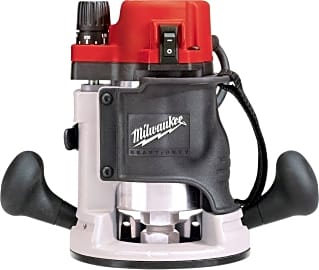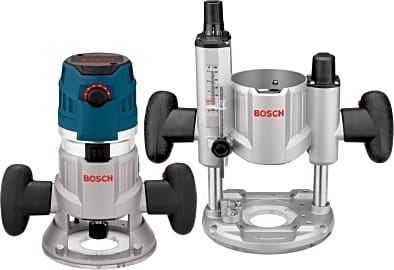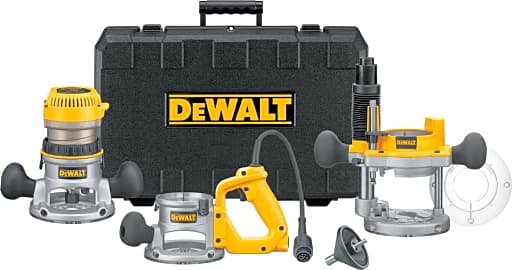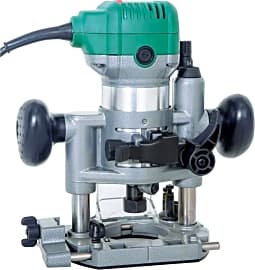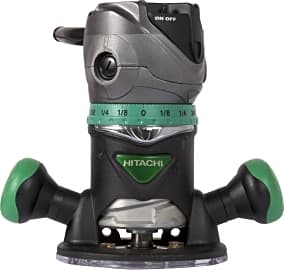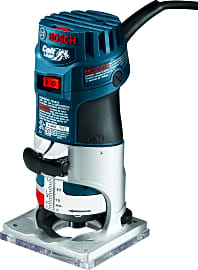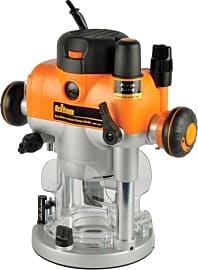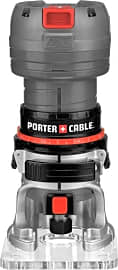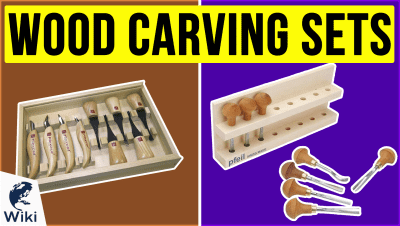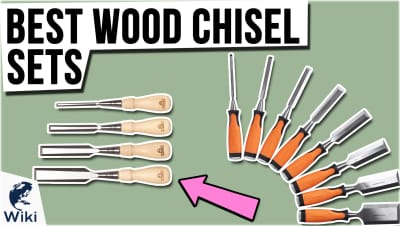The 10 Best Wood Routers

This wiki has been updated 40 times since it was first published in March of 2015. Whether you want to create decorative cutouts, inlays, small profiles, door hinges or dovetail joints, you're going to require a sturdy wood router. Available in both fixed base and plunge models, these motorized tools enable you to produce a variety of cuts in many types of material. We've included selections suitable for both professional craftspersons and home DIYers. When users buy our independently chosen editorial selections, we may earn commissions to help fund the Wiki.
Editor's Notes
September 17, 2020:
Removed the Craftsman Combo because it was discontinued. Added the Milwaukee 5615-20 and the Grizzly Industrial T27139.
Fixed and plunge base routers fill slightly different roles in a workshop. You should choose depending on the sort of work you predict you'll be doing. However it is likely that eventually you'll want to own one of each. Plunge routers like the Festool 574692 are excellent for lowering the bit onto a work piece like you would when cutting rails, borders, or slots that don't extend through the length of the stock. They're also great for cutting mortises and peg holes. Fixed base routers like the Makita RD1101 can't be used for that sort of work but they are much better at cutting at a consistent depth than plunge routers unless the height can be locked in.
If you're just starting out, your best bet is to go for a combination set like the Bosch MRC23EVSK, which comes with both types of bases. It is remarkably affordable for what you gain in building power and versatility. The motor is powerful enough for hardwoods, the height lock holds your bit at the precise height you set (unlike other models that shift slightly when you lock it down), and it comes with 1/4 and 1/2-inch collets.
May 28, 2019:
The DeWalt DW618B3 moves into the top spot, since it provides you with a precision cut with a comfortable grip and minimal hand and arm fatigue. It conveniently allows you to position the cord on either side. This versatile choice comes with 1/4- and 1/2-inch collets, to accommodate both sizes of bit shaft. Also high on the list is the Makita RD1101, which is simple to control and features a soft-start feature, which you’ll quickly come to appreciate. You’ll also enjoy its quiet operation and low vibration, both of which will make your projects much easier.
In this update, we added the Craftsman Combo, which comes with a table, for simple, one-stop shopping. (All you need are your bits.) This low-maintenance machine is permanently lubricated and capable of doing microfine adjustments. The generously sized table features adjustable and extendable fences, so it’s well suited for handling a wide variety of projects. In addition, we removed the Makita RT0701CX3 due to issues with availability.
For safety's sake, be sure to follow proper woodworking practices, including wearing protective clothing and eyewear when you’re operating a router.
Special Honors
Black & Decker RP250 With a powerful, 10-amp motor, this variable-speed plunge router features three easy-to-set turret stops to help streamline repetitive depth cuts. You’ll have high visibility of your workpiece, thanks to its specially designed base and dust extraction port. It includes a spindle lock for quick bit changes, and you’ll also receive a 1/4-inch collet and wrench. It’s backed by a two-year, limited warranty against defects in material and workmanship. blackanddecker.com
Invention Of The Power Wood Router
Instead of steam, he slightly altered the engine's design to run on compressed air.
Wood routers come in both power and hand versions. While many carpenters and handymen choose to use powered versions, some traditionalists feel that hand versions offer better control and accuracy. One can also find Computer Numerical Control or CNC routers, which are navigated by a computer program allowing them to offer superior precision and automation.
The handheld power router was invented in 1915 by Oscar Onsrud. He named them Onsruters, which is a term created by combing his last name and the word router. Onsrud was inspired to build the power router by a railroad company that wanted to use steam power from a locomotive engine to power its front headlight. He designed an air turbine engine, or jet motor, and submitted the plans to the railroad company. He didn't get the contract, but this can be considered serendipitous, as he would later find a use for his design.
Just a few short months later, after continuously getting frustrated while trying to carve a groove into the bottom of a chair with a hand router, he realized that he could use the same air turbine engine he had designed for the locomotive headlight to power a router, and so the makings of the power router was born.
Instead of steam, he slightly altered the engine's design to run on compressed air. He modified an endmill to have steeper rake and clearance angles so that it could evacuate the chips as it cut. Endmills are normally found on standard milling machines, which spin at an average of 3,000 RPMS, but his jet powered router was designed to spin at 30,000 RPMs in order to produce a clean cut with no burn marks on the wood.
Must Have Router Features
There are a few features that every good router should have which make jobs easier and allow for more precise work. The first feature to look for is variable speed controls. Different bit sizes work best at different speeds. For example large bits should rotate at lower speeds, while smaller bits should rotate at higher speeds. The ability to adjust the size can be of vital importance.
This allows you to make bit changes with just one wrench, instead of two as is needed with routers that don't have this feature.
Electronic feedback circuitry can be useful to increase the lifespan of the engine and make the wood router easier to handle. Essentially it monitors the engine load and adjusts the torque to match. This prevents the router motor from lagging or stalling when hitting dense patches of wood, which also helps reduce the chance of it spinning out of control when it suddenly speeds up again.
A soft start feature slowly brings the router to top speed, instead of suddenly blasting to full speed once it is turned on. This can be useful to help prevent the router from jerking in the hand when turned on, allowing you to approach a cut in a cool and collected manner.
Finally, look for a router with a spindle lock feature. This allows you to make bit changes with just one wrench, instead of two as is needed with routers that don't have this feature. This can be especially useful in plunge routers where it is difficult to access the bit.
Deciding What Kind Of Wood Router You Need
Wood routers come in many different sizes and matching the right size router to the job at hand will help you produce better results. If you will mostly be using your router to soften edges and create small profile areas out of a workpiece, than a compact trim router with a 1 to 1.5 HP engine is your best bet. Their small size allows them to easily be used in a variety of orientations and in compact areas where using a larger router would be problematic.
Plunge-base options have a motor that is mounted between spring-loaded posts, and handles located high up on the machine.
They are called trim routers because they are ideal for trimming the edges off a board. Using a larger router for this kind of application can be difficult as they may feel off balanced in the hand. Trim routers can be used with one hand and are extremely versatile as they can also be used for fine joinery, hinge mortises, and small dado joints.
Routers with engines in the 1.75 to 2.25 HP range would be considered mid-sized routers. These may come with a plunge or fixed base and require both hands during operation. Mid-sized routers are a good compromise between convenience and power. They can accomplish jobs that would unfeasible with trim routers, and jobs where a full-sized router would be too unwieldy.
Plunge-base options have a motor that is mounted between spring-loaded posts, and handles located high up on the machine. They allow you to quickly vary cutting depth without having to turn off the tool and feature a depth stop. Fixed-base routers have a lower center of gravity with handles located near the bottom. They only allow routing from the side and cannot be plunged directly into the workpiece. They also require one to turn of the tool to adjust the cutting depth, but many find them easier to work with.
Full-sized routers usually have an engine in the 3 to 3.5 HP range and are only suitable for large profiling. If trying to use a full-sized router on smaller jobs, one may often over route and destroy the workpiece. They are also very heavy and can feel unwieldy to the inexperienced woodworker.



